Dame Mary Quant: Fashion designer dies aged 93
Model Twiggy Lawson has led the tributes to designer Dame Mary Quant, who has died aged 93.
The fashion legend passed away "peacefully at home in Surrey", her family announced on Thursday.
Dame Mary was credited with popularising the miniskirts that helped define the Swinging '60s.
Twiggy, who became a style icon during the era, said Dame Mary had "such an influence on young girls in the late 50s early 60s".
"She revolutionised fashion and was a brilliant female entrepreneur," she wrote in a social media post. "The 1960s would have never been the same without her."
Former Vogue editor Alexandra Shulman called Dame Mary a "leader of fashion but also in female entrepreneurship", adding she was "a visionary who was much more than a great haircut."
Vanessa Friedman, the fashion director of the International New York Times, tweeted: "RIP Mary Quant, who freed the female leg. We owe you."
Her family described her as "one of the most internationally recognised fashion designers of the 20th Century and an outstanding innovator".
"She opened her first shop Bazaar in the King's Road in 1955 and her far-sighted and creative talents quickly established a unique contribution to British fashion."
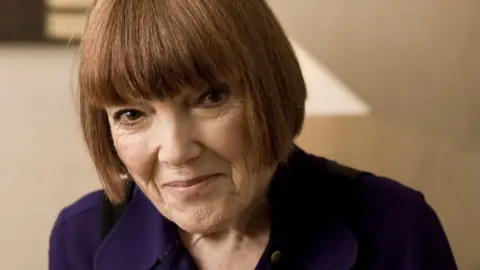 Getty Images
Getty ImagesDame Mary has been lauded for decades as an innovator whose chic designs melded comfort and practicality.
She drew inspiration from the counterculture scene that sprung up in west London in the 1950s, the area which became her base.
Taking cues from Mod style - which incorporated Italian sports clothing - she designed outfits that made women feel comfortable, rather than just items for big occasions.
It appealed widely to a generation of young women eager for an alternative to the otherwise subdued fashions commonplace in post-war Britain.
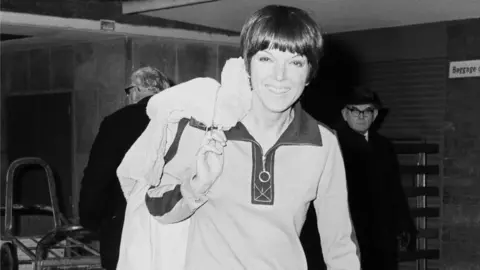 PA Media
PA MediaThe Victoria & Albert Museum said: "It's impossible to overstate Quant's contribution to fashion. She represented the joyful freedom of 1960s fashion, and provided a new role model for young women.
"Fashion today owes so much to her trailblazing vision."
Photographer David Bailey, who captured much of the spirit of London in the 1960s, told the BBC that Quant "was kind of wonderful, she was very positive".
Dame Mary was one of the most influential figures in the fashion scene of the 1960s and is credited with making fashion accessible to the masses with her sleek, streamlined and vibrant designs.
Born in south-east London on 11 February 1930, Dame Mary was the daughter of two Welsh schoolteachers.
She gained a diploma in the 1950s in art education at Goldsmiths College, where she met her husband Alexander Plunket Greene, who later helped establish her brand.
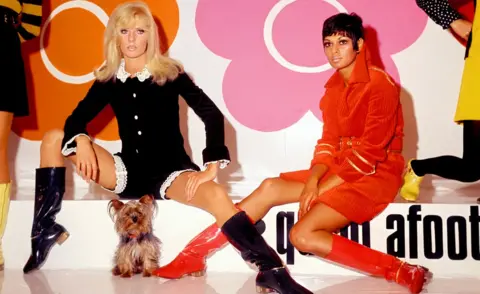 PA Media
PA MediaA budding designer, Dame Mary was taken on as an apprentice to a milliner before making her own clothes, and in 1955 opened Bazaar, a boutique on the King's Road in Chelsea.
The shop would become the beating heart of Swinging London. Bazaar sold clothes and accessories and its basement restaurant became a meeting point for young people and artists.
The whole Chelsea district was soon attracting celebrities such as Brigitte Bardot, Audrey Hepburn, the Beatles and the Rolling Stones.
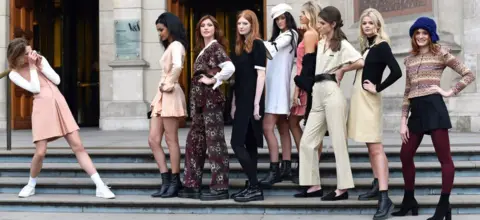 PA Media
PA MediaHer far-sighted and creative talents quickly established a unique contribution to British fashion.
Dame Mary was arguably best known for conceiving the miniskirt and hot pants as well as helping to develop the mod style in the 1960s.
In 2014, Dame Mary, who named the skirt after her favourite make of car, recalled its "feeling of freedom and liberation".
She said: "It was the girls on King's Road who invented the mini. I was making clothes which would let you run and dance and we would make them the length the customer wanted.
"I wore them very short and the customers would say, 'shorter, shorter'."
Dame Mary told the Guardian in 1967 that "good taste is death, vulgarity is life", and raised the hemline well above the knee as she created short dresses and skirts with simple shapes and strong colours that she described as "arrogant, aggressive and sexy".
Whether or not Dame Mary actually invented the miniskirt has been the subject of a long and bitter dispute with late French designer Andre Courreges, among others.
But her role in turning the thigh-skimming super-short hemlines into an international trend has not been disputed.
Dame Mary explored geometric designs, polka dots and contrasting colours, and played with new fabrics, including PVC and stretch fabrics, to achieve a modern and playful look.
Her models were showcased in extravagant and provocative window displays overlooking the King's Road, which became a miniskirt catwalk and drew American photographers keen to picture Swinging London.
Writing in her 1966 book Quant by Quant, Dame Mary recalled: "City gents in bowler hats beat on our shop window with their umbrellas shouting 'immoral!' and 'disgusting!' at the sight of our miniskirts over the tights, but customers poured in to buy," she recalled.
As well as popularising the bob haircut pioneered by her friend Vidal Sassoon, the hairstylist and businessman, Dame Mary also created hot pants, the skinny rib sweater and waterproof mascara.
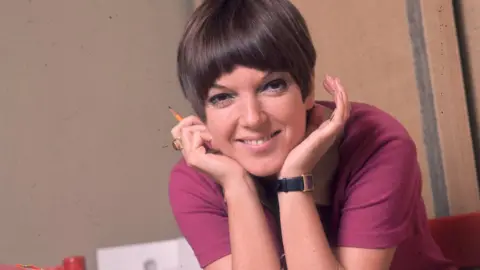 Getty Images
Getty Images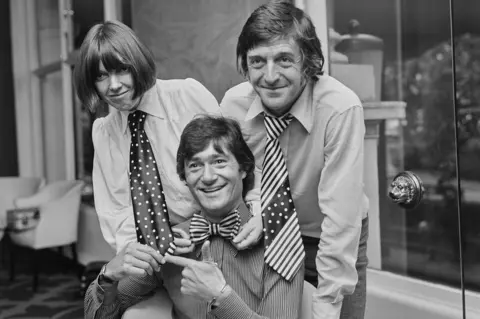 Getty Images
Getty ImagesDame Mary, who was also a Fellow of the Chartered Society of Designers and winner of the Minerva Medal, the society's highest award, was made an OBE in 1966 and a dame in 2015 for services to the fashion industry. She was made a companion of honour in the most recent New Year Honours.
A retrospective exhibition of her work opened at the V&A in 2019 and has since toured Australia, New Zealand, Taiwan and Japan.
Reflecting on the first 20 years of her career as the show launched, Dame Mary said: "It was wonderfully exciting and despite the frenetic, hard work we had enormous fun.
"We didn't necessarily realise that what we were creating was pioneering, we were simply too busy relishing all the opportunities and embracing the results before rushing on to the next challenge."
Actress and designer Sadie Frost said she was "honoured" to front a documentary about Dame Mary's "astonishing life" in 2021.
"The more I researched and delved into her life I realised the vast impact she had on fashion, popular culture, history and women's rights," Frost said in a statement to the BBC. "I really felt like I knew and loved her. Rest in peace, Mary."
